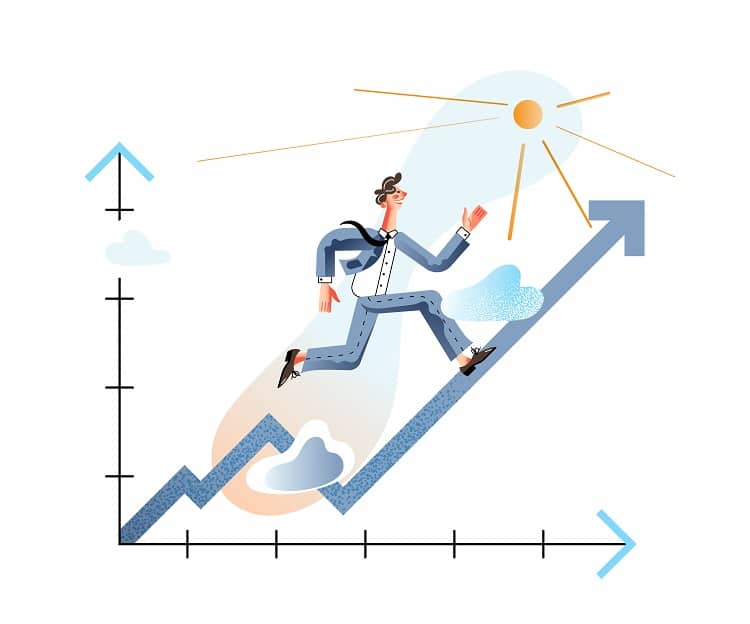
In the rapidly evolving world of entrepreneurship, understanding the stages of startup, also known as startup phases or startup cycle, is pivotal for founders, investors, and other stakeholders. These stages can be viewed as a roadmap, each offering its unique challenges and opportunities, including managing funding at different startup stages.
Startups typically go through various stages, including the Business Idea Stage, Product Development Stage, Seed Stage, Early Stage, Growth Stage, Expansion Stage, and the Exit Stage. Each stage requires different resources, strategies, and types of funding, thus understanding each stage in detail can significantly enhance the chances of a startup’s success.
In this article, we will go into phases of startup in detail, highlighting the vital role of each phase in the overall startup cycle, how to secure and manage funding at different stages, and strategies to maximize chances of success. Whether you’re a budding entrepreneur, an experienced investor, or a curious bystander, understanding these stages offers crucial insights into the lifecycle of a startup.
Startup stages
In the coming sections, we’ll delve deeper into each of these stages, unraveling the complexities, and providing insights into strategic planning, market entry, customer feedback, business growth, and many other vital aspects of a startup’s journey.
The Birth of a Startup: The Business Idea
At the root of every startup is a business idea. This is the seed from which the startup grows, and its strength and viability will often dictate the trajectory of the startup’s journey. A sound business idea is one that is novel, disruptive, and capable of filling a gap in the market. It’s at this stage that strategic planning comes into play, turning the idea into a blueprint for business.
Pre-Seed Stage: Product Development
Following the birth of the business idea, startups progress into the product development stage. Here, the focus is on transforming the idea into a market-ready product or service. This stage involves rigorous market research to validate the business model and ensure the offering addresses a genuine market need. The process of developing the product involves designing, testing, refining, and retesting until a minimum viable product (MVP) is realized.
Seed Stage
The seed stage is where the startup begins to sprout, setting its roots in the business world. Here, startups seek start-up funding to finance their operations and product development. They tap into various sources of funding, including business angels, wealthy individuals who provide capital in exchange for equity.
Mentoring becomes crucial during this phase, providing the startup with valuable guidance and experience. Commercial agreements might be struck to secure the startup’s position in the market and provide a steady flow of revenue.
Risk management becomes increasingly important to ensure the startup can navigate the uncertainties of the business world. It’s at this stage that a robust business plan becomes paramount, providing a roadmap for the startup and proving instrumental in securing funding.
Early Stage: Market Entry and Customer Feedback
The early stage of a startup is characterized by market entry, where the startup introduces its MVP to the market. Gaining a foothold in the market gives the startup a financial boost, facilitating further development and growth.
According to CB Insights report, 42% of the 101 startups they studied failed due to a lack of market need. That is why it’s important to rely on customer feedback during startup creation.
Customer feedback becomes vital during this phase, driving product improvement and helping the startup refine its offerings to better meet customer needs. This feedback enhances the startup’s competitiveness, setting it apart from other players in the market.
At this stage, startups often seek further funding from venture capitalists and other investors. The infusion of external financing fuels business growth, aids in product development, and helps the startup to expand its operations.
Growth Stage: Business Growth and Hiring Staff

The growth stage of a startup is a testament to its successful navigation through the previous stages. This phase is marked by rapid business growth, necessitating the expansion of the startup’s team.
During the growth stage, the startup must pay careful attention to its cost structure and cash flow. The cost structure must be optimized to support sustainable growth, while positive cash flow is essential to finance ongoing operations and future investments.
Hiring staff becomes critical during this phase. As the startup grows, it must bring in specialized talent to manage different aspects of the business, allowing the founder to focus on strategy and growth.
Expansion Stage: Company Consolidation and New Markets
The Expansion Stage is the phase where the startup ventures into new markets and strengthens its position within its industry. At this stage, the startup’s management team must be adept at managing the cash flow to fuel further growth and ensure sustainability.
An effective business strategy is critical in entering new market segments. The competitive landscape can vary greatly from the startup’s initial market, requiring significant adaptations in the product offering and marketing approach.
Expanding a company’s customer base is a significant element of the Expansion Stage. This involves identifying potential new market segments and tailoring the product or service to meet their specific needs. A company’s customer base expansion should not just focus on quantity but also the quality of the customers they are attracting. The aim should be to acquire customers who will offer long-term value and loyalty to the startup.
Investment plays a pivotal role during this stage, as the startup may require significant capital to finance its expansion initiatives, which can include everything from geographic expansion to the development of new products or services.
It’s during this stage that venture capitalists or private equity investors might come into the picture. Their significant financial input can help the startup take big strategic steps, but it may also require the founders to give up a larger share of the company.
Exit Stage: Profit Increase and Potential Paths
The final phase in the startup cycle is the Exit Stage. The strategies that a startup can pursue in this stage vary widely, and can have a significant impact on the broader business community.
One strategy is to merge the startup with another company. Mergers can bring several benefits, including access to new markets, increased resources, and enhanced operational efficiencies. A merger can also offer a profitable exit for the startup’s original investors, as the acquiring company typically buys out their equity stakes.
Another path is taking the startup public through an Initial Public Offering (IPO). The allure of an IPO is strong: it can bring in a substantial amount of capital and significantly raise the company’s profile. However, becoming a publicly-traded company also presents several challenges, including increased regulatory scrutiny and pressure to deliver short-term results for shareholders.
Some startups may also choose to stay private and continue growing organically, much like Cargill, one of the largest private companies in the U.S. For these companies, maintaining control and avoiding the pressures of the public stock exchange are more valuable than the potential capital influx an IPO or merger could bring.
Whichever path is chosen, the Exit Stage often results in a significant profit increase for the company’s stakeholders, particularly if the startup has successfully navigated the preceding stages of its lifecycle.
Conclusion
According to CB Insights, only 1% of startups become unicorns. However, it doesn’t mean that the rest of them have failed. Understanding the stages of a startup, from the initial business idea to the final product or service, is essential for anyone looking to navigate the exciting yet complex world of entrepreneurship. Each stage presents its unique challenges and opportunities, from securing start-up funding in the Seed Stage, soliciting customer feedback for product improvement in the Early Stage, managing business growth and hiring staff in the Growth Stage, all the way to making strategic decisions about mergers or going public in the Exit Stage.
In the dynamic journey of a startup, founders, investors, and other stakeholders should be flexible and adaptable, ready to respond to changes in the market, customer needs, and the company’s own growth trajectory. This understanding, coupled with perseverance and a clear vision, can optimize a startup’s chances of success, contributing positively to the business community and delivering value to its customers and investors.



